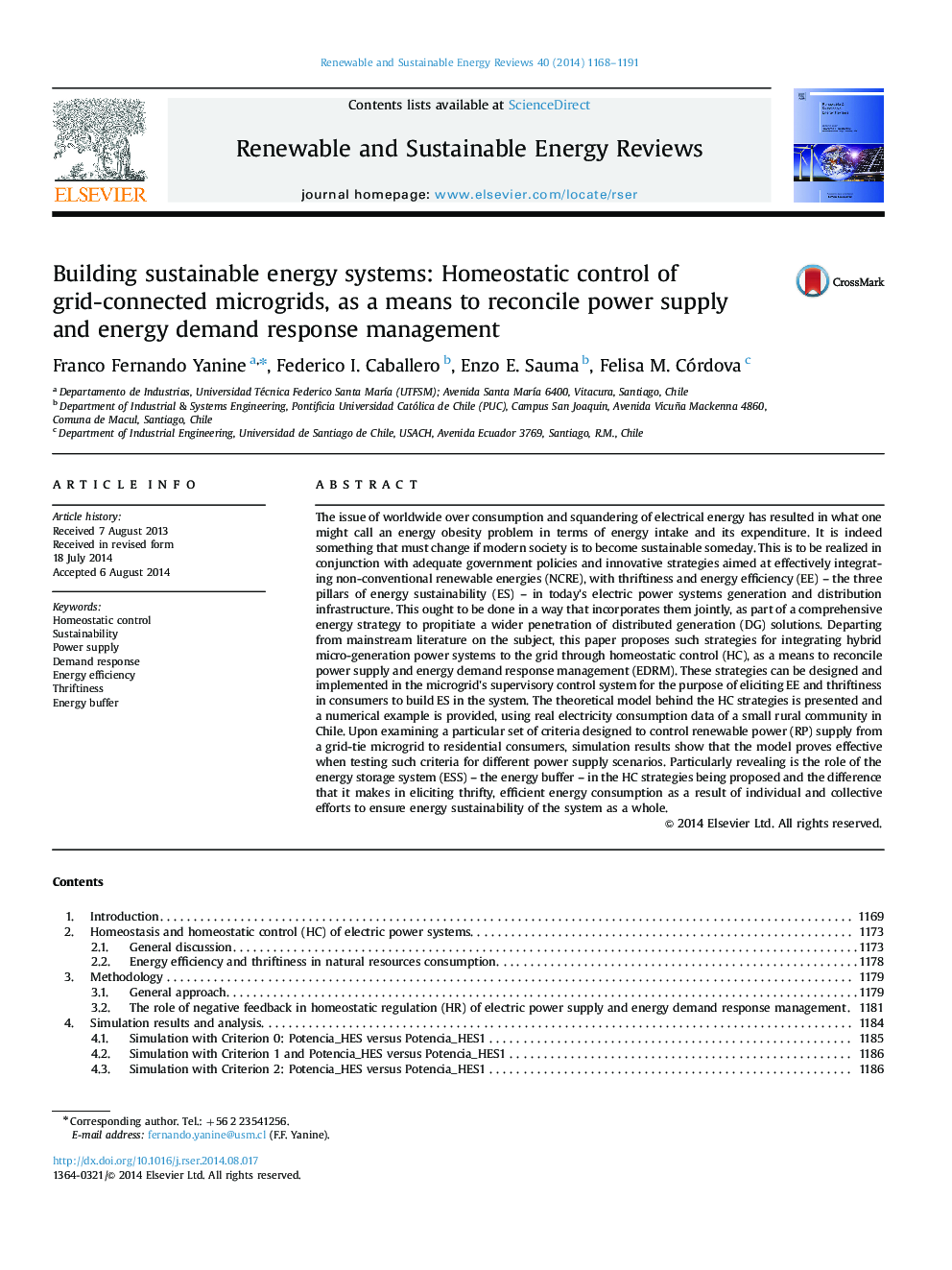| کد مقاله | کد نشریه | سال انتشار | مقاله انگلیسی | نسخه تمام متن |
|---|---|---|---|---|
| 8119219 | 1522345 | 2014 | 24 صفحه PDF | دانلود رایگان |
عنوان انگلیسی مقاله ISI
Building sustainable energy systems: Homeostatic control of grid-connected microgrids, as a means to reconcile power supply and energy demand response management
ترجمه فارسی عنوان
سیستم های انرژی پایدار ساختمان: کنترل خانگی با میکروپردرهای متصل به شبکه، به عنوان وسیله ای برای ادغام منبع تغذیه و مدیریت پاسخ تقاضای انرژی
دانلود مقاله + سفارش ترجمه
دانلود مقاله ISI انگلیسی
رایگان برای ایرانیان
کلمات کلیدی
کنترل هومستاتیک، پایداری، منبع تغذیه، پاسخ تقاضا، بهره وری انرژی، تسریع، بافر انرژی،
موضوعات مرتبط
مهندسی و علوم پایه
مهندسی انرژی
انرژی های تجدید پذیر، توسعه پایدار و محیط زیست
چکیده انگلیسی
The issue of worldwide over consumption and squandering of electrical energy has resulted in what one might call an energy obesity problem in terms of energy intake and its expenditure. It is indeed something that must change if modern society is to become sustainable someday. This is to be realized in conjunction with adequate government policies and innovative strategies aimed at effectively integrating non-conventional renewable energies (NCRE), with thriftiness and energy efficiency (EE) - the three pillars of energy sustainability (ES) - in today׳s electric power systems generation and distribution infrastructure. This ought to be done in a way that incorporates them jointly, as part of a comprehensive energy strategy to propitiate a wider penetration of distributed generation (DG) solutions. Departing from mainstream literature on the subject, this paper proposes such strategies for integrating hybrid micro-generation power systems to the grid through homeostatic control (HC), as a means to reconcile power supply and energy demand response management (EDRM). These strategies can be designed and implemented in the microgrid׳s supervisory control system for the purpose of eliciting EE and thriftiness in consumers to build ES in the system. The theoretical model behind the HC strategies is presented and a numerical example is provided, using real electricity consumption data of a small rural community in Chile. Upon examining a particular set of criteria designed to control renewable power (RP) supply from a grid-tie microgrid to residential consumers, simulation results show that the model proves effective when testing such criteria for different power supply scenarios. Particularly revealing is the role of the energy storage system (ESS) - the energy buffer - in the HC strategies being proposed and the difference that it makes in eliciting thrifty, efficient energy consumption as a result of individual and collective efforts to ensure energy sustainability of the system as a whole.
ناشر
Database: Elsevier - ScienceDirect (ساینس دایرکت)
Journal: Renewable and Sustainable Energy Reviews - Volume 40, December 2014, Pages 1168-1191
Journal: Renewable and Sustainable Energy Reviews - Volume 40, December 2014, Pages 1168-1191
نویسندگان
Franco Fernando Yanine, Federico I. Caballero, Enzo E. Sauma, Felisa M. Córdova,
